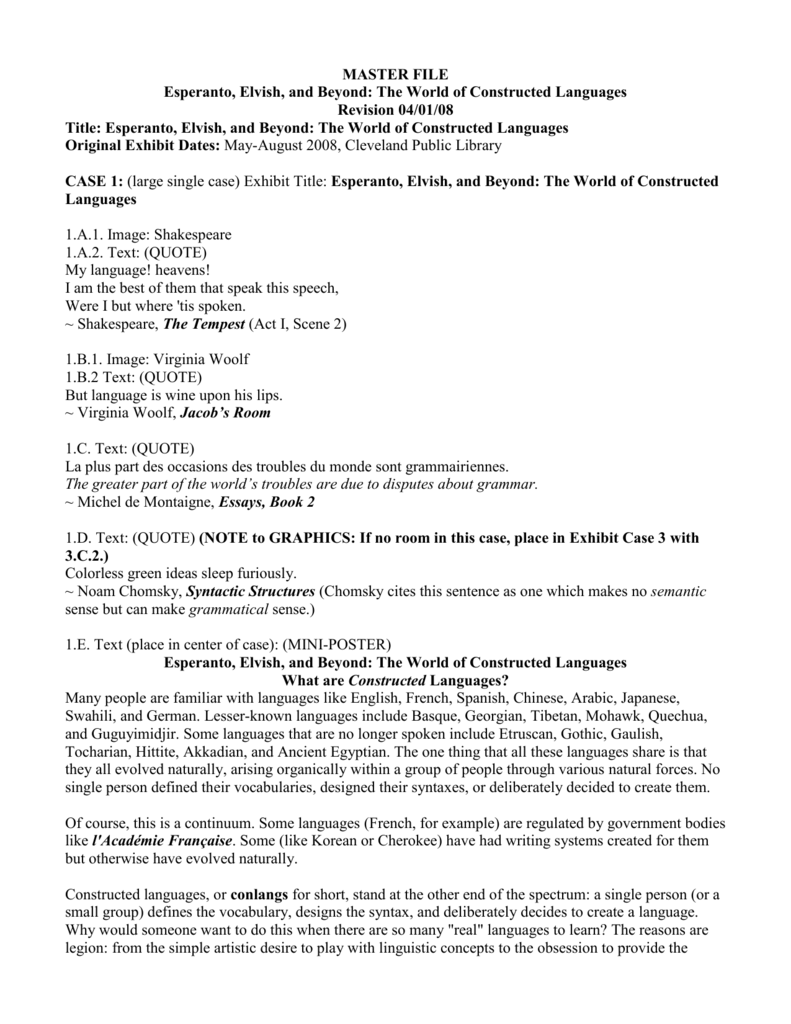Last major update: 23 May 2005. News: 09 September 2006.
Lesson 1: IPA March 29, 2017 dreamingfifi. Learn how to use the International Phonetic Alphabet (IPA). A Fan’s Guide to Neo-Sindarin. Online IPA Phonetics Keyboard - This allows you to type out how words sound. R/sindarin: Volapuk: r/Volapuk: created by ohstrangeone a community for 9 years. Message the moderators. And whenever they notice an accent they will switch to English immediately. When I was there I tried to learn it a bit, but I always used English at the end.
The Sindarin Workbook is for those who wish to study the language of the Elves as spoken in Middle Earth: Sindarin. Through studying this Workbook, the student will be introduced to the basic and important concepts of the language such as genitives, adjectives, verbs, and mutations (etc.), and their understanding will be reviewed by exercises. All information found in the lessons is gathered from Tolkien’s various works, presenting what we currently know about Sindarin.
Hello, at first a very short background: I am a native german speaker, had english in school (finished with a CAE) as my first foreign language, and then latin (for 5 years) and spanish (for 3 years), I finished school 6 years ago. Although I enjoyed learning these languages, the vocabulary was always hard for me. At the moment, I try to learn Irish hear at duolingo. I have always been. Sindarin has a similar syllabic structure to Quenya. There are subtle differences, like the fact that different consonants are used. Without further ado, here are the basic rules for syllable structure in Sindarin: One syllable contains at least one vowel and attached consonants. Learn sindarin provides a comprehensive and comprehensive pathway for students to see progress after the end of each module. With a team of extremely dedicated and quality lecturers, learn sindarin will not only be a place to share knowledge but also to help students get inspired to explore and discover many creative ideas from themselves.
Before choosing an Elvish language to study, you might be wondering at the differences between the two main Elvish tongues that Tolkien created, Quenya and Sindarin. The “Guide”, which can be found in the section “Studying Elvish Tools”, can explain it all. Go to the actual Sindarin lessons by clicking on the links to the right. To do the exercises that accompany each lesson, click on ‘View this Workbook’ below.
It’s recommended to do each exercise as you read each lesson, and to do these exercises at a pace you’re comfortable with. The exercises aren’t tests, so if you’re unsure about something, you can look at the lessons or other resources for help. Comments addressed to the staff can be written in the Conclusions box, whereas anything written in Notes can be seen only by you. Click the ‘Check if Completed’ box when you’ve finished an exercise, and your exercise will be marked by one of the Language staff, who will comment or give you help if needed.
A resource you might find useful during your studies is the Sindarin Mutations Chart (especially for the later lessons), and more can be found in the Languages section of COE. We also have the Tolkien Language Dictionaries and Hiswelókë’s Dragon Flame Dictionary for online use, and for offline use, CoE’s Sindarin Dictionary can be printed out from the Resources section.
You will be introduced to a few things that are not taught in any other Sindarin lessons to date, mainly in the adjective lesson on intensifiers, but all from attested material.


These lessons are based on the writings of Helge K. Fauskanger, David Salo, and, more recently, on information newly obtained from the many authors of Vinyar Tengwar. The original lessons were written by Aaron Shaw, with two updates and revisions of them written by Naneth since that time. Since becoming language administrator, Naneth makes sure the material taught in these lessons is based on attested material only (no “theories†or “filling in gaps with neo-Sindarinâ€), with the exception of the verb section … constructed by David Salo based on the scant knowledge Tolkien has put forth on the subject, at least as far as we know so far. *An update on the past tense “-as†in verbs will soon be part of the lessons. A new lesson on compounds is also coming soon.
This course is dedicated to the Master, J.R.R. Tolkien, who has always been an inspiration to us all.
In this first lesson you’ll learn how to write the six vowels of Sindarin and we’ll use them on one consonant. The other consonants will follow in the next lessons.
Tolkien gave each tengwa a name and a number, and this is the first one:
So it is the tengwa with number 1, its name is ‘tinco’ and it represents the sound ‘t’.
Note: ‘tinco’ is a Quenya word as the names of the tengwar are always in that language (and the words tengwa and tehta are in fact also Quenya).
Sindarin has 6 vowel sounds (we’ll meet the diphthongs in a later lesson). In the mode of Gondor each of these sounds is denoted by a different symbol called a tehta (plural tehtar):
In the mode of Beleriand we write each vowel as a separate letter (like in English):

Write these Sindarin tengwar in Latin letters: mode of Gondor:
mode of Beleriand:
Sindarin Ipa Sindarin Lessons Lesson




